NGC Ancients: The Coinage of Ancient Carthage, Part 3
Posted on 8/10/2021
In the last column we focused on coins issued by Carthage during the First Punic War (264-241 B.C.) and the subsequent Mercenary War (241-238/7 B.C.). This time we’ll examine coins the Carthaginians issued in Spain soon after their humbling defeat by the Romans.
The empire of Carthage was in a weakened state after the wars due to the loss of Sicily and the heavy reparations it had agreed to pay Rome. To regain some its wealth and land holdings, Carthage searched for new areas to colonize. One region they chose was the Iberian Peninsula (modern-day Spain), a region where they’d already established a few colonies.
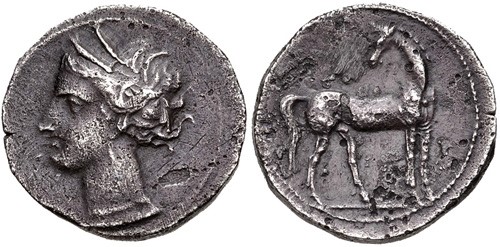 |
The silver half-shekel above was issued in Spain by the Carthaginians c.237-209 B.C. Its style and types are quite similar to that of coins issued in Carthage itself.
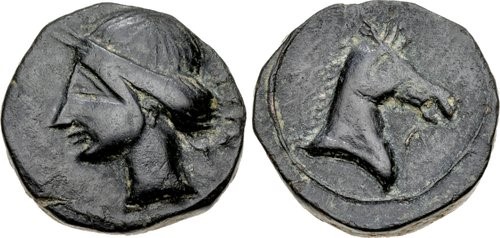 |
The above 22 mm bronze is also inspired by traditional coin designs of Carthage, though this one is executed in an especially crude manner.
Around 237 B.C., an expedition led by Hamilcar Barca, the father of the famous Hannibal who about twenty years later invaded Italy, was sent into Spain to expand Carthage’s empire. After years of conflict, around half of the Iberian Peninsula had fallen under Carthaginian control.
The land was rich in mines, precious metals and manpower — all important resources in increasing the nation's military strength and power.
This access to new mines allowed the Carthaginians in Spain to mint a large number of coins. While the designs of some Punic coins of Iberia — such as the two shown above — mirror their Carthaginian counterparts, most had entirely original designs.
We’ll share a selection of these interesting types.
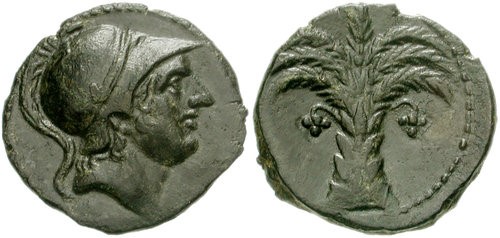 |
The 20 mm bronze above was made in Spain c.237-209 B.C. It shows a helmeted male head on the obverse and a date palm on the reverse. The style of the portrait is fantastic, and one wonders if it was based on a particular person or a sculptural prototype that would have been familiar to the viewers of the day.
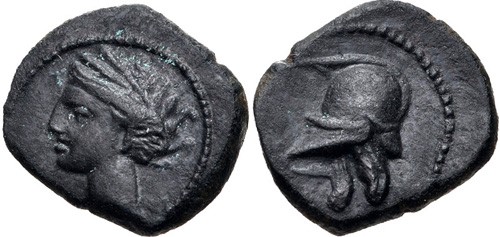 |
The above 13 mm bronze from the same period has Tanit on the obverse and a helmet on the reverse.
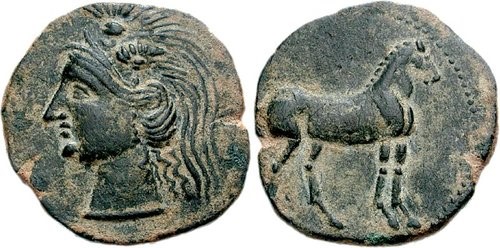 |
Measuring around 27 mm, the above bronze has Athena on the obverse and a horse on the reverse. Athena is one of the few goddesses outside of Tanit to appear on Carthaginian coins.
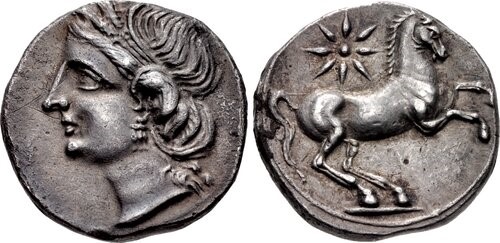 |
Made in Spain c.237-209 B.C., the silver shekel above bears a Tanit of atypical style and a horse rearing beneath a star. While this coin has the same design elements as many coins made at Carthage, it shows quite a different artistic approach.
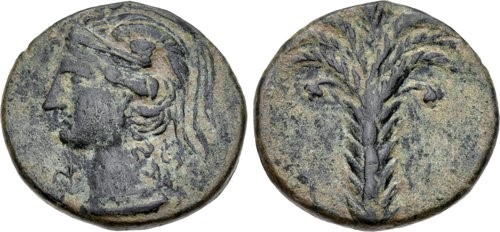 |
The 19 mm bronze above from around the same time shows the head of Athena on the obverse and a date palm on the reverse. The date palm is a common design on many Carthaginian coins.
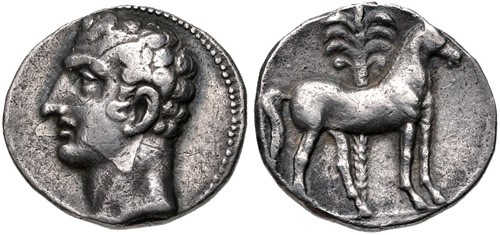 |
The obverse of this silver shekel from c.237-209 B.C. features an unknown male head on the obverse, which has been the subject of much scholarly speculation. It may be one of the Barcids — the family of Hannibal — but this seems unlikely. It has also been seen as the god Melkart. The reverse shows a horse standing before a palm tree.
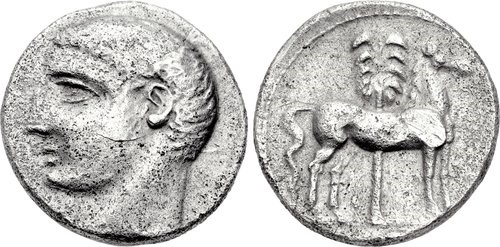 |
This next shekel is quite similar to the previous coin with the exception of the style of the portrait. It has been suggested it portrays the victorious Roman general Scipio Africanus, who was instrumental in the Roman takeover of Spain. But most scholars believe the head is that of the Phoenician god Melkart.
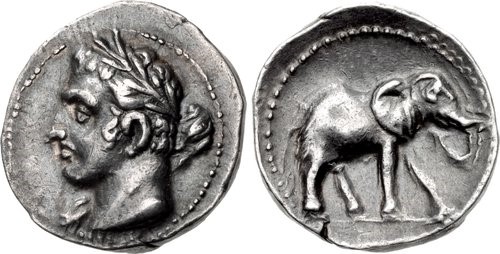 |
The silver quarter-shekel above displays a male head with a club on his shoulder and an elephant. Despite the excellent detail of the coin, there is no consensus on who is portrayed on the obverse. It could be Melkart, who is often shown holding a club.
Spain played a crucial role in the Second Punic War (218-201 B.C.), where it was the staging ground for Hannibal's invasion of Italy. Eventually, the Romans took military action of their own against Spain and seized all Spanish territories from the Carthaginians.
Even though the coins of Punic-Spain were minted for only a few decades, they are among the most beautiful and fascinating coins of the Iberian Peninsula.
In the fourth and final column we’ll review the coins that the Carthaginians produced from the Second Punic War through the city’s destruction in 146 B.C.
All photos courtesy of Classical Numismatic Group.
Interested in reading more articles on Ancient coins? Click here.
Stay Informed
Want news like this delivered to your inbox once a month? Subscribe to the free NGC eNewsletter today!
